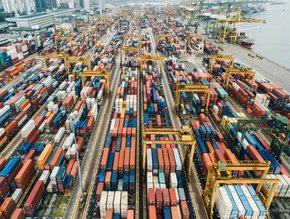Embedding social value into procurement aids business growth

This year marks a decade since the Public Services (Social Value) Act 2012 was introduced. The Act requires public sector buyers to commit to securing wider social, economic and environmental benefits when making procurement decisions. And while embedding social value practices into procurement might have its origins in the public sector, today it's very much the mantle of private sector businesses too, with ESG forming an important aspect of many procurement strategies.
With a decade of practice and refinement under its belt, the structure around social value in the public sector has developed, with additional guidance, public procurement notes and mandates. Just this month, NHS England introduced a mandatory 10% minimum social value weighting into all procurement. When you take into account the Government’s pledge to build 40 new hospitals by 2030, including social value in standard business practices becomes fundamental rather than a ‘nice to have’.
It’s no surprise that some of the first organisations to formalise and report upon social value creation were those eager to contract with public sector bodies, but to assume that’s the only driver would be inaccurate. On a wide scale, all organisations whether or not working with the public sector, now understand that demonstrating tangible social value can help them win new work. But it has much further-reaching benefits in terms of ’ creating meaningful ties with their communities, attracting and retaining talent, reporting back to their ESG focused shareholders and delivering reputation and brand benefits to boot.
What does social value mean in practice?
Put simply, social value is an overarching term used to describe what an organisation does to improve society, starting with the community in which it operates, and includes action taken to reduce an organisation’s environmental impact. In fact, if you’re familiar with the UN’s Sustainable Development Goals then you’ve got a pretty good proxy for social value, albeit at a global rather than localised level.
What social value means in practice is therefore likely to change from one job to the next, as different communities will have different needs, which means that different projects or buyers will have different priorities. For example, seeking suppliers that can provide training for local people makes sense in areas where unemployment is high. The key is understanding the needs of a given community and developing a framework that caters for those needs, to ensure that together with suppliers your organisation makes a targeted and meaningful contribution.
Forming links in the chain: it’s a win whether you’re a buyer or a supplier
Within the procurement ecosystem, focusing on social value can bring equal benefits for both buyers and suppliers. If you’re a public sector buyer you have a responsibility to maximise tax payers money and should be seeking to extend the value of the ‘public pound’ by looking at what additional benefits can be found by embedding social value (or sustainability) into your procurement decision making - for instance creating new jobs for disabled people, support for community projects or additional savings in carbon emissions.
If you’re a corporate buyer, not bound by the legislation, you should be asking yourself, how can I support the business in delivering on its ESG goals and social purpose through what I am buying and who I am buying from?
And if you’re a supplier that works directly with a social value-focused organisation, you’re far more likely to win the work if you demonstrate that you can deliver on the customer’s social value aims.
For both buyer and supplier, embedding social value helps make your business the most competitive it can be, attracting high quality staff who want to be part of something bigger than themselves and strengthening relationships with the community.
In short, it’s a ‘virtuous circle’ where everyone stands to gain by helping to build a successful, prosperous and sustainable community which leads to a healthier, more resilient workforce that in turn, can support the business’ success.
Identifying, measuring and reporting social value
The most efficient way to capture and report social value is by using the widely recognised National TOMs, a UK wide measurement framework that provides a minimum reporting standard and is free to download.
Based on non-financial data, it enables an organisation to put a monetary value against the contribution an organisation makes to society. These ‘hard’ numbers reflect the fiscal and economic saving to society by taking action and managing social value.
In short, the total social value of any contract, project, asset, corporate work or activity can be measured as the sum of the measures, multiplied by the values and this ‘valuation’ can be used in procurement decision making.
From a procurement perspective, having a clear, reportable framework makes it far easier to compare supplier bids on the non-financial aspects of their tender, helping to level the playing field. It also makes total supply chain reporting a much more straightforward task, supporting ESG reporting, Scope 3 reporting, TCFD reporting or any of the plethora of frameworks for which an organisation might be obliged (or elect!) to submit evidence of its actions.
The critical role of procurement
The expanding remit of procurement teams is not new news. While price is always an important consideration, an organisation's requirements are far more complex than that and procurement teams sit at the very heart of protecting a firm’s reputation as well as its purse strings. Whether that means asking for additional evidence of quality assurance, anti-slavery practices or environmental policies, embedding ethical practices into procurement at the outset delivers much greater control and measurable benefit for the whole company than the sum of its silos.






